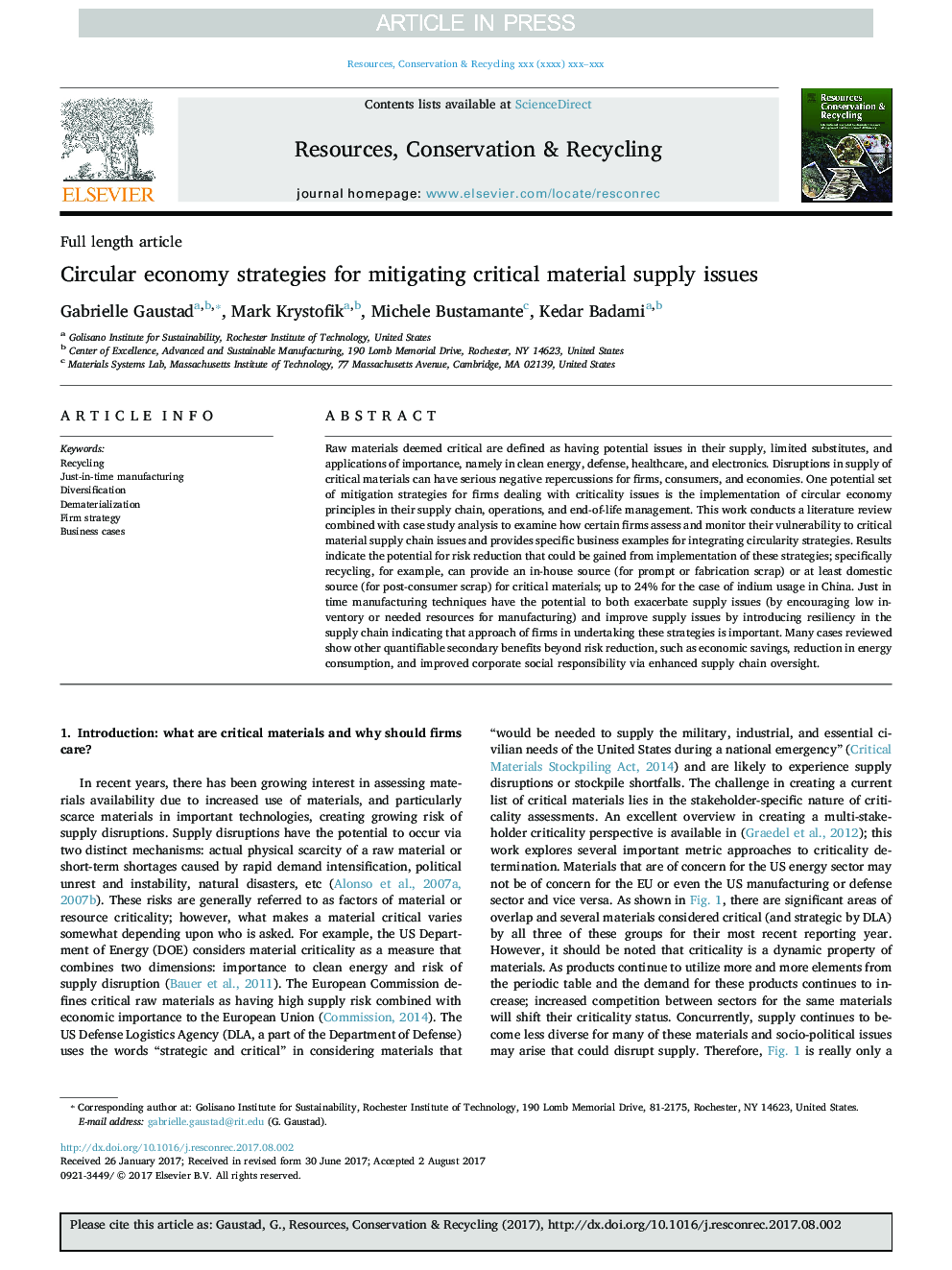| Article ID | Journal | Published Year | Pages | File Type |
|---|---|---|---|---|
| 7493983 | Resources, Conservation and Recycling | 2018 | 10 Pages |
Abstract
Raw materials deemed critical are defined as having potential issues in their supply, limited substitutes, and applications of importance, namely in clean energy, defense, healthcare, and electronics. Disruptions in supply of critical materials can have serious negative repercussions for firms, consumers, and economies. One potential set of mitigation strategies for firms dealing with criticality issues is the implementation of circular economy principles in their supply chain, operations, and end-of-life management. This work conducts a literature review combined with case study analysis to examine how certain firms assess and monitor their vulnerability to critical material supply chain issues and provides specific business examples for integrating circularity strategies. Results indicate the potential for risk reduction that could be gained from implementation of these strategies; specifically recycling, for example, can provide an in-house source (for prompt or fabrication scrap) or at least domestic source (for post-consumer scrap) for critical materials; up to 24% for the case of indium usage in China. Just in time manufacturing techniques have the potential to both exacerbate supply issues (by encouraging low inventory or needed resources for manufacturing) and improve supply issues by introducing resiliency in the supply chain indicating that approach of firms in undertaking these strategies is important. Many cases reviewed show other quantifiable secondary benefits beyond risk reduction, such as economic savings, reduction in energy consumption, and improved corporate social responsibility via enhanced supply chain oversight.
Keywords
Related Topics
Physical Sciences and Engineering
Energy
Renewable Energy, Sustainability and the Environment
Authors
Gabrielle Gaustad, Mark Krystofik, Michele Bustamante, Kedar Badami,
